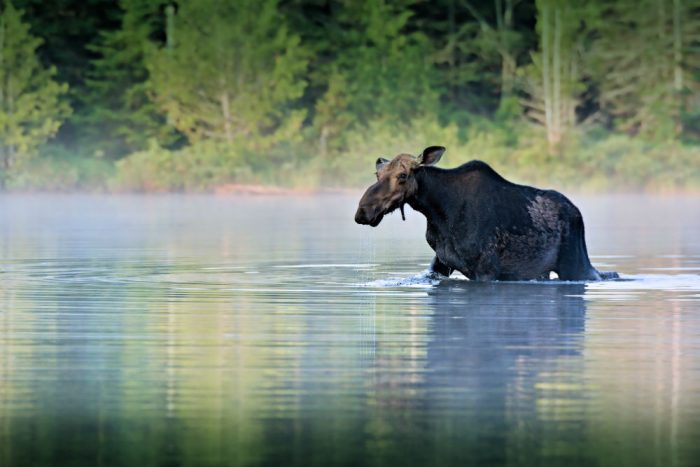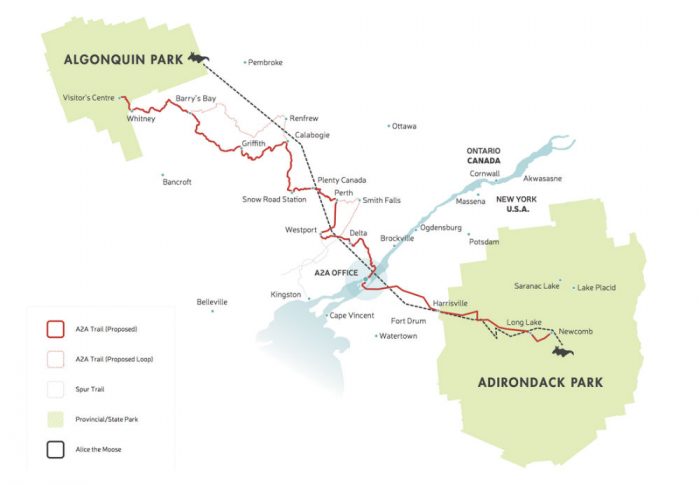Would you let a moose plan your hike? That’s what will happen if a new trail concept comes to fruition.

In 1998, researchers radio collared a 700-pound female moose and released her in New York’s Adirondack Park. Eighteen years later, her 350-mile journey into Canada’s Algonquin Provincial Park may be the groundwork for a new U.S.-Canada hiking trail. The route, and project, may also lead to a safer migration route for wild animals.
The moose, dubbed “Alice,” meandered for three years through streams, lakes, roads, evergreen forests, and small towns. Her remains were discovered in 2001 in the Algonquin Provincial Park.
The proposed A2A Trail (Algonquin To Adirondack) would combine 192 miles of existing trails, 56 miles of old railroad tracks, 60 miles of major roads, and 115 miles of back roads. The concept, officially launched in 2014, aims to create a multi-use trail system that promotes outdoor activity and spurs economic development in the rural Northeast, from New York to Ontario.
Perhaps most importantly, the A2A would help preserve what board member and A2A Collaborative committee chair Emily Conger called “one of the last great migration routes.”
Thousand Islands Migration Route
Bears, foxes, deer, wildcats, and moose, which migrate across the U.S.-Canadian border, are funneled through the Thousand Islands area in upstate New York. There, the St. Lawrence River cuts east, and Lake Ontario stretches west.
By following the general route Alice blazed between 1998 and 2001, Conger and the A2A identified an area that needs protection to allow for safe wildlife passage.
A hiking trail could also benefit the communities and stakeholders along the planned 400-mile route. To that end, the A2A Collaborative is holding trail-promotion events along the proposed Canadian corridor, beginning this fall.
While the A2A Collaborative acknowledges the trail would develop over time, it intends to work with landowners to cobble together a trail using back roads and public and private property until a dedicated trail is constructed.
–To participate in the A2A development, donate, or volunteer, contact the A2A Collaborative.
—Homepage image courtesy bcameron54.








